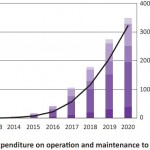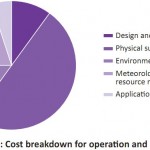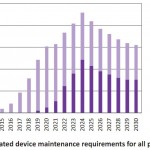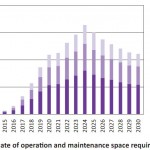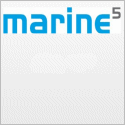Operations & Maintenance
The operation and maintenance (O&M) stage covers all the activities necessary to ensure ongoing generation during the project’s anticipated operational life of 25 years. These activities commence once the project is ‘handed over’ after installation and commissioning and continue up to decommissioning. It is an area that will in time present significant opportunities for supply, including for companies local to projects. Included in operation is monitoring of device and balance of plant condition, energy output performance and the impact of the project on the environment. Maintenance includes planned and unplanned elements.
Operation and maintenance makes up a significant fraction of lifetime cost and continuous safe and reliable operation is essential to the success of a project. Operations on multiple devices in harsh environmental conditions pose considerable challenges and further development of both tooling and processes will need to continue over the coming years in order to deliver required levels of reliabilityand operating costs.
By the time the Pentland Firth and Orkney waters projects are nearing completion, there may be around 1,600 devices operating. Some technology developers envisage that devices will be maintained at least partially in-situ, for example, where the rotors and drive trains can be lifted out of the water for repair. Others will require disconnection and towing to shore for maintenance, even for repair or replacement of low cost components. Minimising waiting time for access to devices is recognised as key in maximising uptime.
Logistics costs and response times are reduced by carrying out a large proportion of maintenance activities local to each project, thus using local port facilities. If port facilities were shared between projects and able to accept complete devices for repair or refurbishment, then the scale of activity could attract a supporting supply chain with a clustering effect.
Although the procurement models for O&M services are yet to be fully developed, it is anticipated that in early years, core activities may be led by staff based locally and employed by device manufacturers. This will aid feedback of design improvements to improve next generation devices. As the industry matures, more third-party providers could be expected to enter the market. Even for early phases, it is anticipated that providers of vessels and onshore component refurbishment and repair will contract with the manufacturers of a number of different devices.
To view further detail please read the Content Source: The Crown Estate, May 2011 – Wave and Tidal energy in the Pentland Firth and Orkney waters: How the projects could be built.

